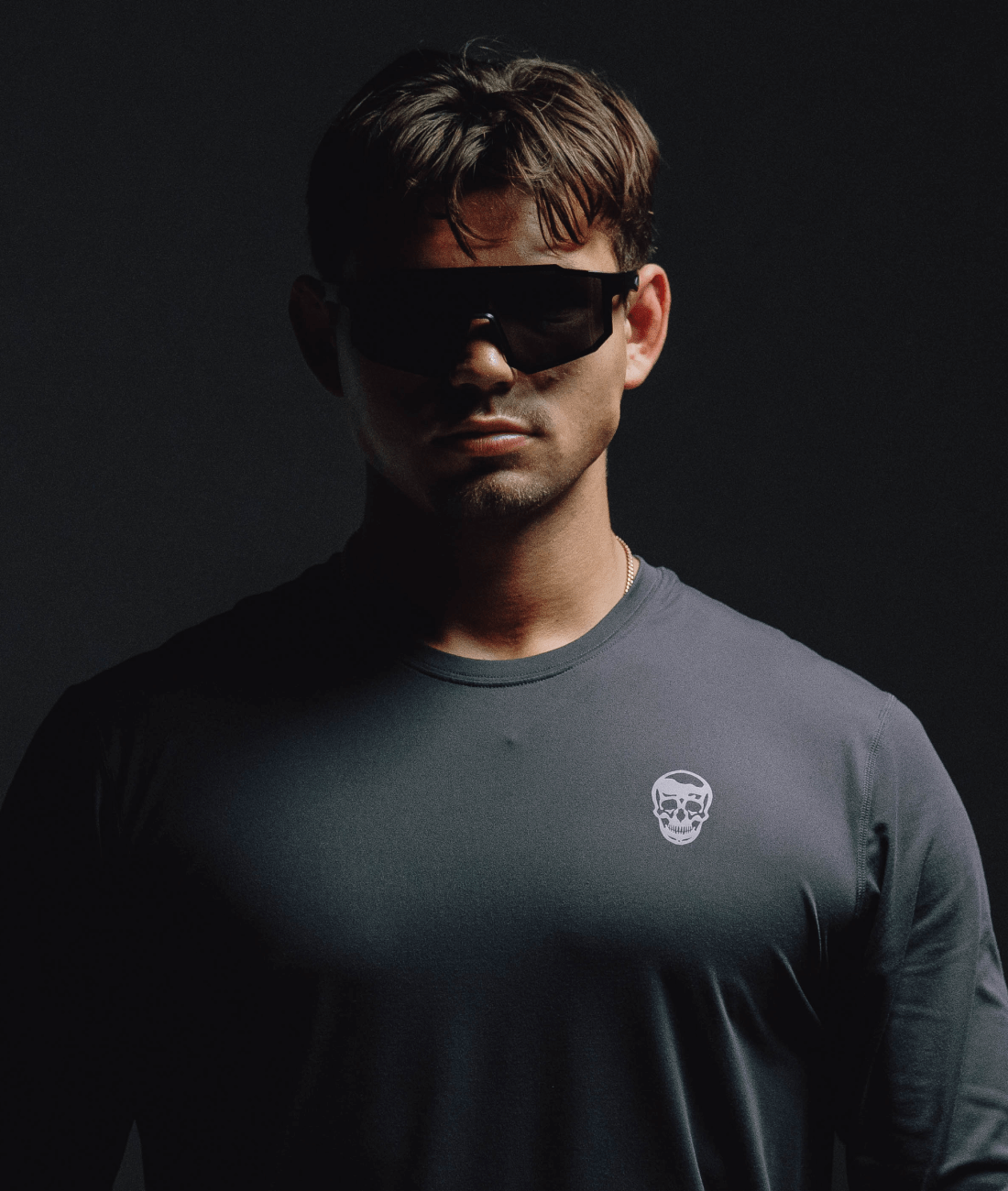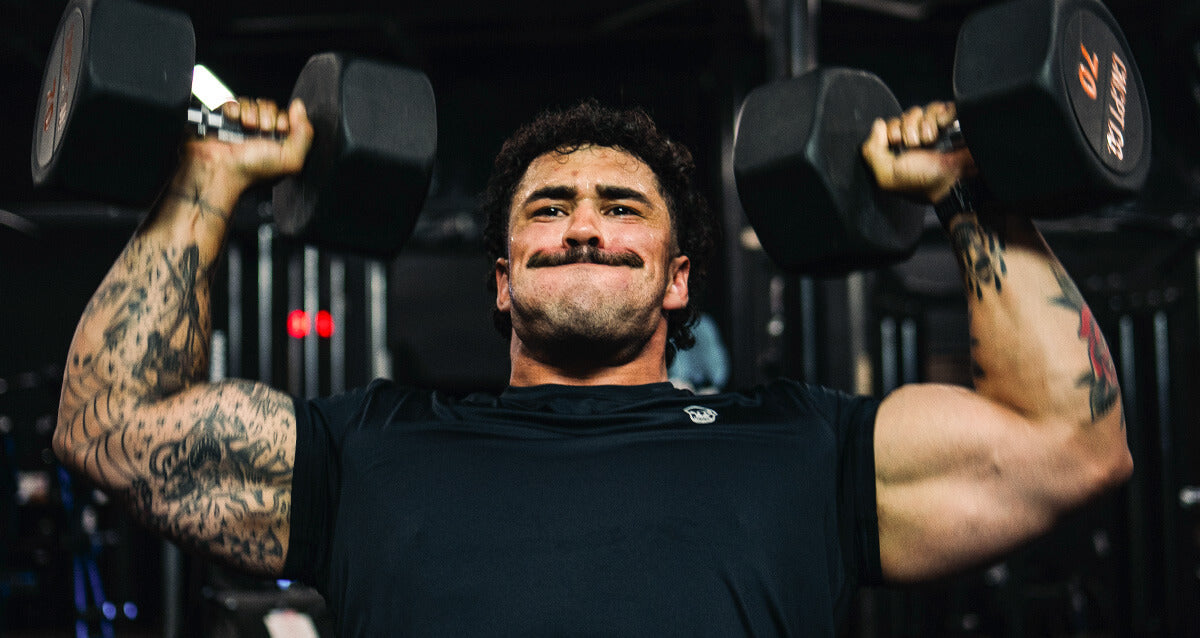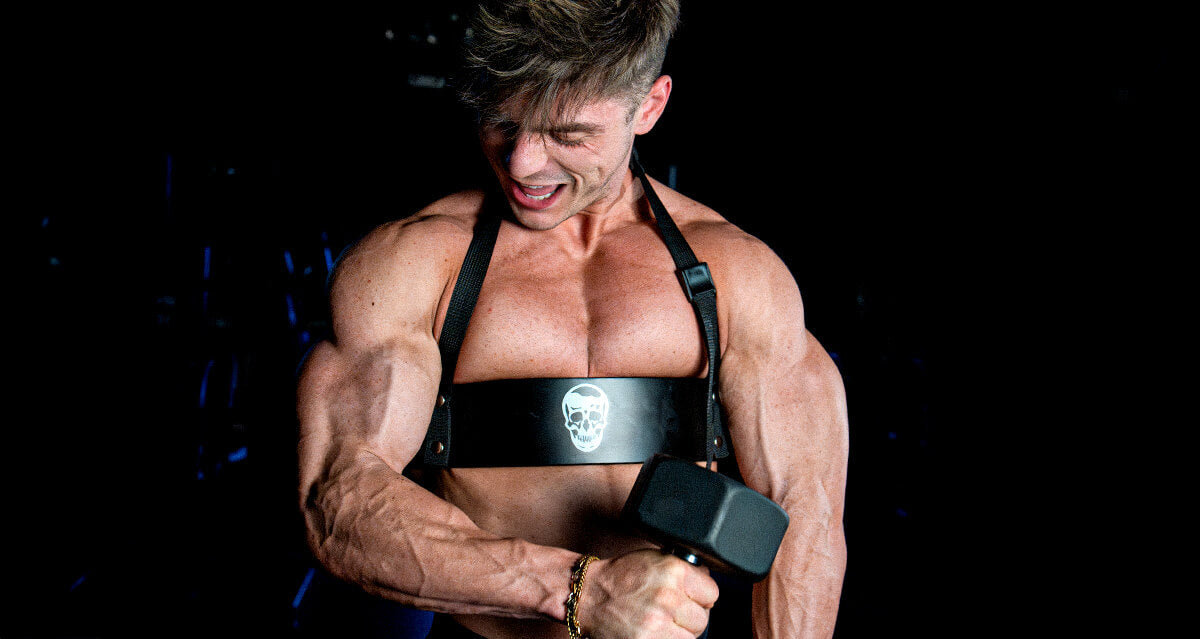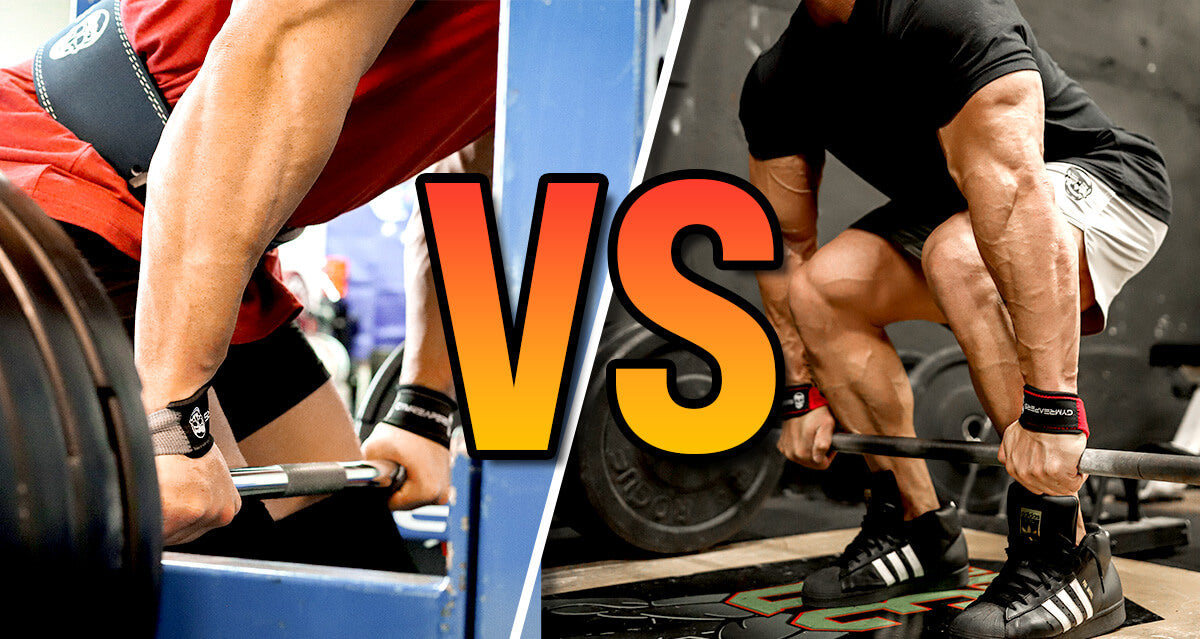If you want to train your chest and shoulders together, you must be strategic in your exercise selection and approach to ensure they get equal opportunity to grow.
I’ll explain everything you need to know when building the most effective chest and shoulder workout plan.
Key Takeaways
Chest & Shoulder: Muscle Overview
The chest and shoulders are upper body muscles responsible for pressing loads away from the body. Varying the angle of the press changes the loading demands of these muscles.
The shoulders are primarily responsible for vertical pressing motions, whereas the chest muscles work hardest during horizontal pressing motions.

Chest
The chest is composed of the pectoralis major and pectoralis minor. Both are targets during pressing movements, particularly horizontal pressing motions like the bench press.
Shoulders
The shoulders are composed of the deltoids, which have three portions: the front, side, and rear delt. Depending on the angle of the press, you can shift more emphasis to the front, lateral, or rear delt muscle fibers. Refer to the movements below to learn more.
Benefits of Training Chest & Shoulders Together
Below are a few benefits of training chest and shoulders together:
Balanced Recovery
By training your chest and shoulders together, you will have more time between sessions to allow your pushing muscles to recover. The more recovered you are, the higher the quality of work you will be capable of with each training session.
If you were to train your chest one day and your shoulders the next, your shoulders would be slightly fatigued from your chest workout (as the shoulders assist the chest), and vice versa.
Training them together provides ample time to fully recover both muscle groups between sessions, assuming you’re resting 2-3 days between push sessions.
Time Efficiency
Training the upper body pushing muscle groups (chest and shoulders) in the same session is a very efficient use of time, as you can train both muscle groups with 3-4 movements.
Training your chest and shoulders together is ideal for lifters who are short on time and those who can’t make it to the gym often enough to train each muscle group twice when training them separately.
Can Increase Training Frequency
If you want to increase training frequency for more muscle growth (or to limit overall workload on any given day, which can help recovery and when coming back from overuse injury), training both shoulder and chest on the same day means you can spread out your volume across 3-5 total sessions per week.
This is common with full-body splits, as they allow you to train 2-4 sets per session per muscle group, delivering constant stimulus for growth (which is essential for advanced lifters).
Drawbacks of Training The Chest & Shoulders Together
There is a strong case against training these two muscle groups together, as they overlap considerably.
If you are more advanced and want to grow your chest or shoulders, take a more focused approach and train them on separate days to maximize training each muscle group from a fresh state.
Key Chest Exercises
Below are eight of the best chest exercises to maximize muscle growth.
1. Barbell Flat Bench Press
The barbell bench press targets the chest with various loading, grip widths, and training focus (strength, muscle endurance, hypertrophy).
How To
- Lie on a bench with your hips, upper back, and shoulders on the pad. Plant your feet under your hips.
- Puff your chest, unrack the bar, and hold it over your shoulders. Slowly lower the barbell to your sternum while pulling the elbows towards the floor.
- Touch the chest softly with the barbell without bouncing or using momentum, then press the weight back up.
Expert Tip: Focus on keeping the chest elevated as you lower the bar to prevent the chest from collapsing and your shoulders from rounding forward. I like to think of this as raising the chest up to meet the bar rather than lowering the bar to the chest.
Why You Should Try Wrist Wraps for Bench Press
Gymreapers wrist wraps are an easy and effective way to boost your bench press performance. They stabilize your wrists, reducing strain and helping you keep proper alignment when lifting heavy weights. This allows you to focus on pressing without concerns about wrist pain or compromised form. Plus, wrist wraps provide crucial joint support, helping to prevent injuries and making them a must-have for anyone serious about building strength and muscle.
2. Barbell Incline Bench Press
The incline bench is a bench press variation performed on an incline of 15-45 degrees; the higher the incline, the more the upper chest is targeted.
How To
- Set an adjustable bench to an incline of 15-45 degrees and sit down with your feet under your hips.
- With your chest puffed up and shoulder blades pressed into the bench, unrack the weight and lower the barbell to the upper chest.
- Touch the upper chest without bouncing the bar off the body, and press upwards back to the start.
Expert Tip: Experiment with the bench's angle, as the slightest angle change makes a big difference in growth. I'll usually spend a month or so at 15 degrees, then shift to 45 degrees for another month, and then to 30 degrees for a few more weeks or months.
3. Dumbbell Flat Bench Press
This exercise is the dumbbell version of the flat bench press. It is excellent for addressing muscle imbalances or asymmetries and switching up the stimulus with an increased range of motion.
How To
- Lie on a flat bench with your feet under your hips, your chest puffed up, and your lower back slightly arched.
- Press the dumbbells above your shoulders, keeping your chest puffed up and hips on the bench.
- Lower the weights to the outside of the torso, pause, and press upwards.
Expert Tip: At the bottom of the movement, pull the weights deep into a chest stretch position to increase the range of motion and tension on the chest, which are key for stimulating growth. However, do not let your shoulders round forward as you lower the weights; keep them retracted.
4. Dumbbell Incline Bench Press
This movement is the dumbbell version of the incline barbell bench press, and it addresses many of the same issues (e.g., asymmetries) the dumbbell press above does; however, it targets the upper chest muscle fibers.
How To
- Set an incline bench to 15-45 degrees, and lie down with your feet under your hips.
- Press the dumbbells above your shoulders, keeping your hips planted and chest up (back arched). Then, lower the weights to the outside of your upper chest.
- Press upwards to the start and repeat.
Expert Tip: I love training these with a slight pause at the bottom, as it helps keep the emphasis on the chest and reduces the shoulder’s influence. Not controlling the bottom phase can cause the shoulders to round forward and become more involved than they should.
5. Smith Machine Flat Bench Press
The smith machine is a guided version of the barbell bench press, allowing you to focus on the movement without worrying about controlling or stabilizing the load. Therefore, you can concentrate on pushing closer to failure safely.
How To
- Set up a flat bench like you would when doing a barbell bench press, ensuring that the barbell touches your lower/middle chest at the bottom of the press.
- Unrack the weight and slowly lower the bar out your lower/middle chest.
- Press the weight back to the start and repeat.
Expert Tip: If you do these alone, set stoppers or safety pins up. This is a great exercise to train to failure as long as you are sure that if you fail, you can get out from underneath the bar.
6. Smith Machine Incline Bench Press
This exercise is the incline version of the smith machine bench press and trains the upper chest muscle fibers on a set bar path.
How To
- Adjust the bench's incline to 15-45 degrees and place it so the bar touches your upper chest at the bottom of the press.
- Unrack the bar and lower the weight to the upper chest, feeling a deep stretch across your upper chest.
- Press the weight up and repeat.
Expert Tip: If you feel your shoulders working more than your upper chest, lower the bench to decrease the incline. The more upright you are, the more your shoulders will take over.
7. Cable Fly
The cable is a chest isolation exercise you can do at various angles to target various areas of your chest. The standard chest fly involves pulling the weight horizontally, but you can also perform them upward, downward, or crossover to target various chest areas.
How To
- Stand between the cable beams with the pulleys set at the desired height.
- Grab the handles with palms forward and step out 2-3’ so there is tension on the cables.
- With your chest up, lift the handles up or out in front of you (depending on the variation you choose), slowly lower the hands back down, and repeat.
Expert Tip: Keep your torso upright and elbows fixed during this exercise. The key is to lift the weights using your chest and only your chest. If you use your arms or shoulders too much, decrease the weight.
At-Home Alternative: Cable Fly with Resistance Bands
8. Machine Fly
This exercise is a machine version of the cable fly and is great because you do not need to worry about setup or form as much as the cable variation. This variation is helpful for beginners and when you are training to muscular failure.
How To
- Sit down and reach your hands out wide to the handles.
- Puff your chest up, keep your arms long and elbows slightly bent, and move your palms inwards and in front of you using your chest.
- Move the hands inwards until they touch, then slowly lower the weight, feeling a deep stretch in the chest.
Expert Tip: Focus on moving your arms as wide as possible while pressing your back and shoulders into the back pad. The wider you go, the bigger the stretch, the better the growth. Try to keep your reps between 8 and 30.
Key Shoulder Exercises
Below are six of the best shoulder exercises you can do to grow your shoulders
1. Barbell Military Press
This standing shoulder exercise trains the front and lateral deltoids. It can be done with various loading and rep ranges (strength, muscle endurance, hypertrophy).
How To
- Unrack a barbell at chest height and step back, ensuring you support the bar on the front of your shoulder.
- Press the weight overhead and straighten the arms at the top.
- Slowly lower the bar down to the top of the front of your shoulder, and repeat.
Expert Tip: At the bottom of the press, ensure your elbows are below the wrists or slightly in front to protect your joints. Additionally, ensure the barbell is on the front shoulders, not the chest.
Why You Should Try Elbow Sleeves for Pressing Exercises
2. Barbell Seated Shoulder Press
This movement is the seated version of the military press. It is best performed with an incline bench set to 60 degrees or greater.
How To
- Adjust your incline bench to 60 degrees or greater, and sit down and unrack the barbell.
- Press the barbell overhead, lower the weight to the top or front of the shoulders, press upwards, and repeat.
Expert Tip: If you are experiencing shoulder discomfort, go lighter to see if the feeling improves. If you’re still having issues, try changing the angle of the bench up or down by 5-10 degrees.
3. Dumbbell Seated Shoulder Press
This exercise is the dumbbell version of the seated shoulder press, ideal for addressing muscle imbalances and asymmetries. It’s also a better alternative for those prone to shoulder pain or discomfort, as you have more freedom to alter your positioning.
How To
- Set yourself up on an incline bench at 60 degrees incline or greater.
- With dumbbells resting on the shoulders, press them upwards overhead, and ensure they are above you, not in front.
- Lower the weights to the outer edges of the shoulders, with the palms forward or slightly turned in, and press back up to the start.
Expert Tip: I gain a lot of strength by slowly lowering the weights to my shoulders and getting as low as I can without rounding my body forward. In doing so, I can increase the time under tension and encourage more growth. If you cannot lower the weights without your shoulders rounding forward or can only do half reps, decrease the load.
4. Smith Machine High Incline Shoulder Press
The smith machine variant of the shoulder press is more convenient to set up than a barbell or dumbbell and allows you to train the shoulder press to muscle failure safely (since you do not need to stabilize the load as much).
How To
- Set an incline bench inside the Smith machine rack, ensuring the bar touches the top of your chest and front of your shoulders (approximately 60-degree incline).
- Rack the weight and lower it to the body.
- Press the weight bar up to the starting position and repeat.
Expert Tip: Most of the time, a 60-70 degree angle will be best for smith machine pressing; however, if you have shoulder discomfort, try changing the angle up or down by 5-10%.
5. Dumbbell Lateral Raise
The dumbbell lateral raise is an isolation exercise for the shoulders that targets the outer lateral fibers of the deltoid. Building up your lateral delts with this exercise will give your shoulders more dimension.
How To
- Stand upright with dumbbells to your sides, palms facing your body.
- With your arms straight, lift the weights outwards as high as possible.
- Slowly lower the weights down and repeat.
Expert Tip: I get amazing delt growth when I lift the weights overhead, rather than stopping at shoulder height. To do this, I have to use a lighter weight and focus on lowering the weights slowly (this is key to growth and minimizing shoulder injury).
You'll get amazing results if you can check your ego and go lighter, slower, and increase the range of motion.
6. Cable Lateral Raise
This movement is the cable version of the lateral raise and differs from the dumbbell variation by keeping constant tension on the muscles throughout the entire range of motion. The cables also act as a guide, helping you maintain a fixed path more easily, which is ideal for beginners.
How To
- Set a cable pulley to the lowest setting and place a handle on the clip.
- Reach across your body and grab the handle so that the pulley runs in front of you. Rotate your palms to your side, facing you.
- Pull the handle outwards in an arcing motion, keeping your arm straight.
- Lift as high as possible, then slowly lower the weight to the starting position.
Expert Tip: When performing these one arm at a time, I like to grab the cable machine and lean away from the stack to increase the movement's range of motion.
It is best to train this one arm at a time to focus on the working muscle and push closer to failure; however, you can cross over handles and do it with two.
Note: You may notice there is no rear deltoid exercise listed above. That is because the rear delts are used across chest and shoulder training to assist in stabilizing the loads. Additionally, you will get ample rear deltoid training if you perform upper-body pulling sessions that train pulldowns, rows, and other back movements.
Maximize Your Resistance Band Workouts with Handles
How To Structure The Ultimate Chest & Shoulder Workout
Here’s your quick start guide to building a chest and shoulder workout.
Exercise Selection
Choose 2-3 chest and 2-3 shoulder exercises per session. The chest and shoulder exercises should include at least one compound and one isolation exercise.
Compound exercises involve movement at the shoulder and elbow joints (e.g., bench press or shoulder press variations). Isolation exercises involve movement through only one joint (e.g., chest fly and lateral raises).
Additionally, I recommend using a variety of modalities in a workout. Free weights, machines, and cables allow you to train the muscles hard and minimize conflicting fatigue.

VERIFIED CUSTOMER REVIEWS
Exercise Order
I recommend training the chest and shoulders at least twice a week. You can train one first in one session and then train the other first in the next session.
By training each group first in one session every week, you can ensure that each group is trained from a fresh state at least once per week.
Sets
Aim to train the 2-4 sets per movement, for a total of 6-12 total sets per muscle group.
The key here is to train the muscle hard but not destroy it so much that you cannot train it again in 2-3 days.
Beginners can do a few more sets than advanced lifters since they are not well-versed in training to failure. However, as you progress, you should aim to train the muscles as hard and efficiently as possible (more stressful sets and fewer of them).
Reps
Most of your work should be in the 8 to 15 rep range.
However, you can also include 5-10 rep range work on heavier compound lifts for strength and growth. Likewise, higher rep training in the 20-30 rep range could be excellent for adding size, especially with machines, cables, and isolation movements.
Loading
Use as much (or as little) weight as you need to train to fail within the prescribed rep range.
Ideally, you train with the most challenging weight while still being able to control the weight in the full range of motion and perform the number of reps or reps range you need to target.
You may find wearing a lifting belt during chest and shoulder workouts helpful to limit postural fatigue and push closer to failure with the target muscles. I recommend using a softer, more flexible belt like the Gymreapers Quick-Lock Belt. Give it a try for your next workout!
Weekly Progressions
Below is an example of how to progress loading, sets, reps, or a combination of the three across a 6-week program.
-
Week 1: Establish a baseline, ending all sets with 2-3 good form reps in the tank.
-
Week 2: Add reps using the same weight as week 1, leaving 0-2 good-form reps in the tank.
-
Week 3: Add more weight than you did in week 2 (5-10% increase), and train each set until you have 0-2 good-form reps in the tank.
-
Week 4: Add more weight than you did in week 3 (5-10% increase) OR do the same weight as week 3, but perform more reps, leaving 0-2 good-form reps in the tank.
-
Week 5: Add more weight than you did in week 4 (5-10% increase) OR do the same weight as week 4, but perform more reps, leaving 0-2 good-form reps in the tank.
- Week 6: Repeat Baseline Weight, Reps, and Sets (Deload Week)
The Best Chest & Shoulder Workout (Beginner & Advanced)
Below are two workouts, one for beginners and one for advanced lifters. Note that both workouts are similar.
The critical difference is beginners may have a few more sets per movement since they typically are not experienced enough to train to complete muscle failure with good form. Advanced lifters can normally train the muscle very efficiently with fewer total sets.

For Beginners
- Smith Machine Flat Bench Press: 4 sets of 8-15 reps
- Machine Assisted Dip or Dip: 4 sets of 8-15 reps
- Machine Fly: 4 sets of 8-15 reps
- Dumbbell Shoulder Press: 4 sets of 8-15 reps
- Dumbbell Lateral Raise: 4 sets of 8-15 reps
For Advanced Lifters
- Smith Machine Incline (30 degrees) Bench Press: 2-3 sets of 8-15 reps
- Barbell Bench Press: 2-3 sets of 8-15 reps
- Cable Fly: 2-3 sets of 8-15 reps
- Cable Lateral Raise: 2-3 sets of 8-15 reps
- Dumbbell Seated Shoulder Press: 2-3 sets of 8-15 reps
Reviews from Our Customers
How To Integrate A Chest & Shoulder Workout Into Your Training Plan
Integrating chest and shoulder workouts into your current training plan can be done in many ways; the most common ones involve incorporating them into a 4, 5, or 6-day routine.
The general recommendation is to train your chest and shoulders twice weekly. However, if done correctly, you can train them three, four, or every five to six days a week.
The key is to spread the weekly training volume out across the week. Here are some examples of how to train your chest and shoulders two to four times a week.
Two Times Per Week
Session 1
- 2-3 Chest Exercises, then
- 2-3 Shoulders Exercises
Session 2
- 2-3 Shoulder Exercises, then
- 2-3 Chest Exercises
Three Times Per Week
Session 1
- 2 Chest Exercises, then
- 2 Shoulders Exercises
Session 2
- 2 Shoulder Exercises, then
- 2 Chest Exercises
Session 3
- 2 Shoulder Exercises
- 2 Chest Exercises
- You can train your chest or shoulders first. Choose the muscle group that is most important for you to develop for the next 4-8 weeks to be trained first in this session.

Four Times Per Week
Session 1
- 2 Chest Exercises, then
- 2 Shoulders Exercises
Session 2
- 1-2 Shoulder Exercises, then
- 1-2 Chest Exercises
Session 3
- 1-2 Chest Exercises, then
- 1-2 Shoulder Exercises
Session 4
- 2 Shoulder Exercises, then
- 2 Chest Exercises
Frequently Asked Questions
Should You Train Chest And Shoulders On the Same Day?
You can undoubtedly train both on the same day. If you will train both, pay attention to exercise order and how that meets your overall goals for that session.
Should I Train the Chest Or Shoulders First?
Train whichever muscle group you want to develop the most first, as the muscle group trained second in the session will be pre-fatigued. Train both twice a week (at least) with each muscle group first at least once a week.

















1 comment
Patrick Tesone
Good advice! Been doing the iron game for 50 years and I learned something new everyday yet! Thx
Leave a comment
All comments are moderated before being published.
This site is protected by hCaptcha and the hCaptcha Privacy Policy and Terms of Service apply.